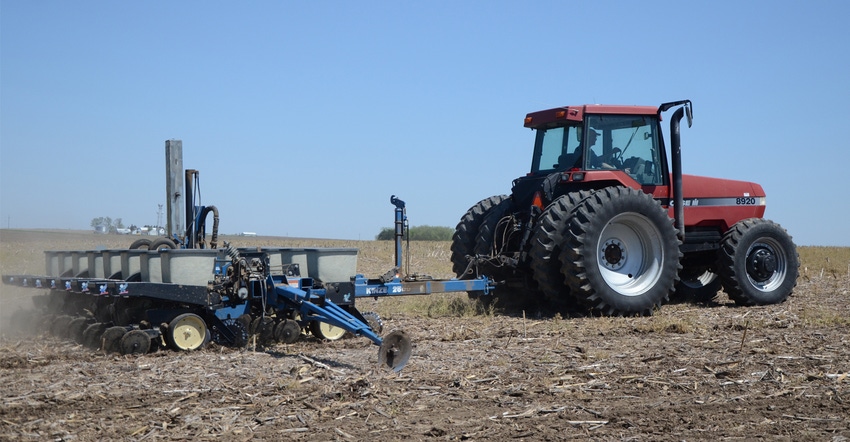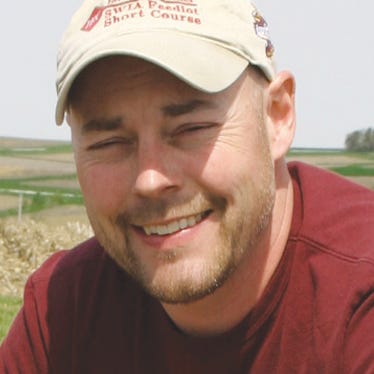February 17, 2021

It's challenging to think about soybean populations when it's below zero outside in mid-February. Heck, I don't even like to think about our seed sitting in storage in temperatures like this. But the other day, a seed dealer and I were talking about various soybean topics, and he reminded me that we may be in the field a couple months from now.
One of the topics we hit on was plant populations. There are a lot of different factors that influence soybean yields — some we can control and many we can't. Of those factors that we can manage, plant populations are pretty important in maximizing returns.
Soybeans are somewhat forgiving when it comes to populations. But "pretty forgiving" leaves room for improvement and fine-tuning, which we'll discuss in a bit.
Iowa State University recognizes there is no one-size-fits-all recommendation. In general, a short version that fits many fields is "soybean stands beyond 100,000 to 125,000 plants per acre at harvest typically do not result in yield increases great enough to be economically important when the added seed cost is considered."
A recent multi-state soybean production benchmarking survey and various industry surveys line up pretty well, and it looks like most of us in Iowa plant in the 135,000 to 165,000 range.
The soybean production benchmarking survey consisted of researchers across the north-central region gathering producer supplied data from over 9,100 fields. They analyzed what producers shared, with goals including identifying yield-limiting factors, and ways to reduce or eliminate them. In other words, how do we narrow the "yield gap" between high-yielding and lower-yielding fields?
Planting date had the most consistent impact on yield. Tillage, fungicide and insecticide applications, drainage system, and soybean maturity groups were also significant factors, sometimes ranking above populations. But as various summaries of the study are quick to point out, there is often more to the story. Plant populations are important in terms of both yield and economics, and this sentence caught my eye: "Seeding rates are much higher than those required to achieve a plant density that maximize yield."
Here in Iowa, we tended to be closer to recommended seeding rates than many other states, with our final populations around 115,000 to 140,000 based on the data from the 1,300 fields in the benchmarking survey and industry estimates. So the research says that in general we can probably cut back planting populations by around 15,000 seeds per acre. That sounds pretty good when looking at the seed bill, and for most fields, this carries little risk of yield penalty. But does one size fit all?
Factors affecting seeding rate decisions
For that survey, I sat down with farmers and collected info on dozens of fields. Turns out that while a lot of fields fit within the norms, there are a lot of fields where farmers are planting above or below the general recommendations with great success.
There may be factors influencing the right population for your situation relating to row spacing, planting dates, disease and soil factors, tillage systems, seed treatments or pest management to name a few. Folks dealing with white mold tended to get along better at lower populations, for example. Some growers fighting tough-to-control weeds had moved toward narrower rows and increased populations with success.
In working with variable-rate seeding, it seems that at just about the time we see general trends we can use, we'll see enough contradictory information to make them not so, well, "general." In reading how the Iowa Soybean Association summarizes results of its VRS trials, what stood out was VRS has the potential to increase profitability in some fields. As the cost of seed increases, it becomes more important, and more research needs to be done on the topic.
Speaking of the ISA, they have a great interactive soybean variable-rate planting simulator. With user inputs of historical soybean yield, seed cost and expected yield response, the tool simulates different variable planting rate scenarios to maximize return and minimize cost.
What's best population for you?
ISU's general recommendation is to plant 125,000 to 140,000 seeds per acre, or to shoot for the 100,000 to 125,000 plants per acre at harvest mentioned earlier. Of course we have to consider the impact of potential issues like lower-than-normal seed quality, tough soil and weather conditions, or a history of seedling diseases. If these factors can be predicted, seeding rates should be adjusted proportionally.
Recommendations from ISU, ISA and your seed company are a great start, and perhaps the best fit for most fields. On-farm trials are a next step to fine-tune. Running some population trials may help you go beyond general recommendations and fine-tune them to optimize them for your fields. Grain prices and seed costs also greatly influence what “optimal” seeding rates are for each production system.
We are chasing a moving target as varieties, seed costs, soybean prices and other variables shift from year to year, so you might find yourself thinking about doing population trials on a consistent basis in the future.
McGrath is an Iowa State University field agronomist.
About the Author(s)
You May Also Like






